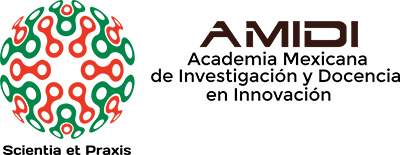The Intellectual Capital and the Social Impact of Technological Innovation for the Valuation of Patents
DOI:
https://doi.org/10.55965/setp.2.04.a4Keywords:
Valuation, Intellectual Capital, Social Impact, Intangible and PatentsAbstract
Purpose. The purpose of this work is to demonstrate the structure of knowledge based on graphics and the evolution of the valuation of innovation patents in public research centers. The final document is a product of VOSviewer software to analyze the availability of innovation patent valuation records in the Scopus Databases from the years 2000 to 2022.
Methodology. This document is valuable because it shows a description of the scientific articles in the Scopus databases analyzed with the software VOSviewer (Bibliometric Analysis) software by country, educational institution, and author, with emphasis on the evolution of research on the subject in question. Finally, a visualization map cited references and co-citation analysis is provided to spot the knowledge base at the forefront of innovation.
Findings and Originality. This chapter is an approach to the state of the art of innovation patent valuation research in public research centers. It also demonstrates a structure of visual knowledge and the evolution of the topic in question. It also provides an important reference for academics to visualize the current situation and collaborative trends in this subject.
Theoretical contribution. The results show how intellectual capital is one of the main factors when valuing innovation patents, but in practice, only traditional cost-focused methods are used.
Practical contribution. When intellectual capital is included in the valuation of innovation patents, the intangible aspects of the patent are better covered, obtaining a more accurate valuation than with a traditional valuation focused on costs.
Downloads
References
Asociación para la difusión y generación de conocimiento sobre la medición y gestión del impacto social (ESIMPACT, 2022 ). Impacto Social. https://www.esimpact.org/impacto-social/
Bernal, R. A. (2019). Valuadores piden legislación para su reconocimiento: CE Noticias Financieras. Content Engine LLC, a Florida limited liability company, 1–2. https://www.pressreader.com/panama/la-estrella-de-panama/20190823/281668256633047
Cárdenas-Salazar, P. J. (2021). Revisión Bibliométrica de la Gestión del Conocimiento Tradicional. Scientia et PRAXIS, 1 (1), 28–51. https://doi.org/10.55965/setp.1.01.a4
Chen, H., Jiang, W., Yang, Y., Yang, Y., y Man, X. (2017). State of the art on food waste research: a bibliometrics study from 1997 to 2014. Journal of Cleaner Production, 140 (2), 840-846. https://doi.org/10.1016/j.jclepro.2015.11.085
Chunlei, Ye., (2018). Bibliometrical Analysis of International Big Data Research: Based on Citespace and VOSviewer: 14th International Conference on Natural Computation. Fuzzy Systems and Knowledge Discovery. DOI: 10.1109/FSKD.2018.8687153
Corrado, C., Haskel, J., Jona-Lasinio, C., y Iommi, M. (2018). Intangible investment in the EU and US before and since the Great Recession and its contribution to productivity growth: Journal of Infrastructure. Policy and Development, 2(1), 11-36. DOI:10.24294/jipd.v2i1.205
Global Intangible Finance Tracker (GIFT, 2018). Informe anual del valor de los intangibles en el mundo: Global Intangible Finance Tracker (GIFT), Brand Finance. https://brandirectory.com/download-report/GIFT%20-%20ESP.pdf
González-Ramos, A. M., González de la Fe, T., Peña-Vázquez, R., Bonnet-Escuela, M., y Van Oostrom, M. (2006). La dificultad de medición de los elementos intangibles del sistema de ciencia y tecnología. Empiria Revista de Metodología de Ciencias Sociales, 12, 111. https://doi.org/10.5944/empiria.12.2006.1139
Haskel, J., y Westlake, S. (2018). Capitalism without capital: The Rise of the Intangible Economy. Princeton University Press. https://press.princeton.edu/books/hardcover/9780691175034/capitalism-without-capital
Mas, M., Quesada, J., y Pascual, F. (2019). Mapa del talento en España 2019: Cómo lo generan, atraen y retienen las comunidades autónomas. Fundación Cotec para la innovación, València, Ivie. https://docplayer.es/125113721-Mapa-del-talento-en-espana-como-lo-generan-atraen-y- retienen-las-comunidades-autonomas.html
Mas, M. (2020). El crecimiento de la productividad y los activos intangibles. Papeles De Economía Española, 164, 41-59. https://www.proquest.com/docview/2428567948?pq-origsite=gscholar&fromopenview=true
Organización Mundial de la Propiedad Intelectual. (2022). OMPI: Patentes.https://www.wipo.int/patents/es/
The Organisation for Economic Co-operation and Development. (OECD, 2019). OECD Stats. https://stats.oecd.org
Pandit, D., Joshi, M. P., Sahay, A., y Gupta, R. K. (2018). Disruptive innovation and dynamic capabilities in emerging economies: evidence from the Indian automotive sector. Technological Forecasting and Social Change 129, 323-329. https://doi.org/10.1016/j.techfore.2017.09.035
Radnejad, A., y Vredenburg, H. (2019). Disruptive technological process innovation in a process- oriented industry: A case study. Journal of Engineering and Technology Management, 53, 63–79. https://doi.org/10.1016/j.jengtecman.2019.08.001
Schumpeter, J. A. (1934). The Theory of Economic Development: an Inquiry into Profits, Capital, Credit, Interest, and the Business Cycle. Consultado el 23-Nov-2022. https://www.hup.harvard.edu/catalog.php?isbn=9780674879904
Smith, A. (1996). Investigación sobre la naturaleza y causas de la riqueza de las naciones: Junta de Castilla y León, 1(12).
https://hdl.handle.net/20.500.12371/4443
Stewart, T. A. (1997). Intellectual Capital: The new wealth of organizations. Consultado el 23-Nov-2022, de:
https://doi.org/10.1002/pfi.4140370713
Tiantian, S., Xiaoming M., y Waheed, A. (2019). A historical review and bibliometric analysis of disruptive innovation. International Journal of Innovation Science, 11(2), 208-226. https://doi.org/10.1108/IJIS-05-2018-0056
Tidd, J., y Bessant, J. (2021). Managing Innovation Integrating Technological, Market and Organizational Change. 7th Ed. Wiley. Consultado el 22-Nov-2022.
Tyfield, D. (2018). Innovating innovation-disruptive innovation in China and the low-carbon transition of capitalism. Energy Research and Social Science, 37, 266-274. https://doi.org/10.1016/j.erss.2017.10.024
Visconti, R. A. (2009). El capital intelectual concepto-valuación y registro contable. St. Louis: Federal Reserve Bank of St Louis. Consultado el 22-Nov-2022. http://nulan.mdp.edu.ar/985/1/00519.pdf
Waltman, L., Eck, N., y Noyons, E. (2010). A unified approach to mapping and clustering of bibliometric networks. Journal of Informetrics, 4(4), 629-635. https://doi.org/10.1016/j.joi.2010.07.002
Yu, D., y Hang, C. C. (2010). A reflective review of disruptive innovation theory. International Journal of Management Reviews, 12(4), 435-452. https://doi.org/10.1111/j.1468-2370.2009.00272.x
Published
How to Cite
Issue
Section
License
Copyright (c) 2022 Ricardo de Jesús Nuño-Velasco, Juan Mejía-Trejo

This work is licensed under a Creative Commons Attribution-NonCommercial 4.0 International License.











